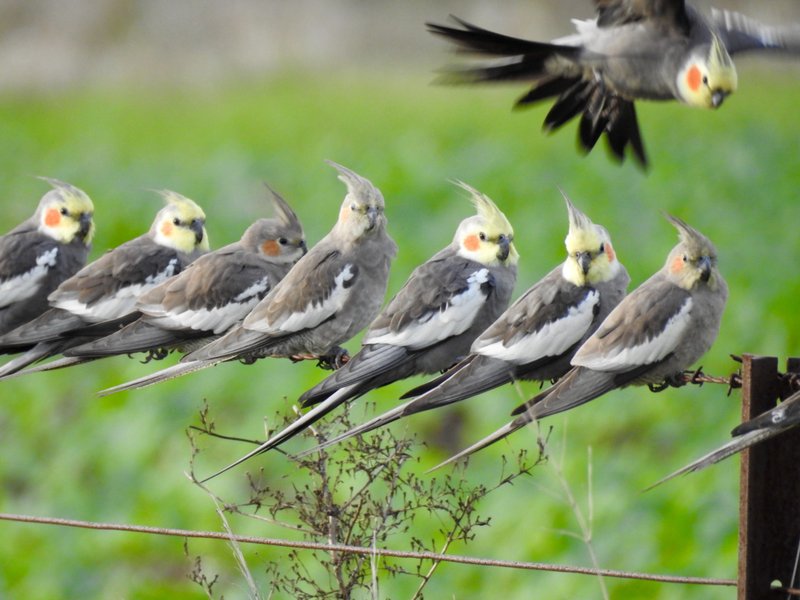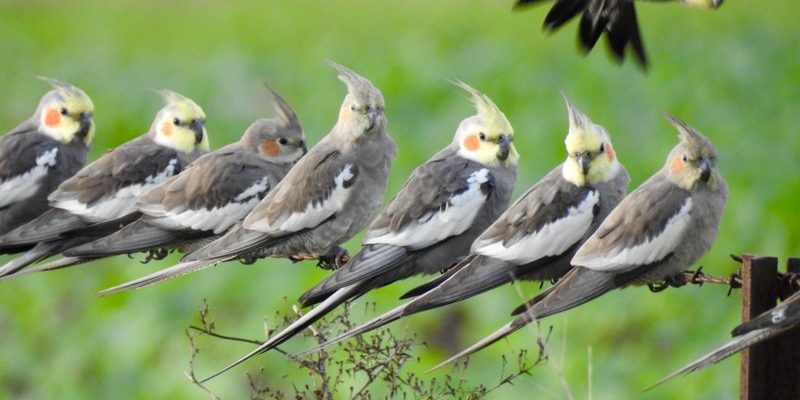
You might be wondering why we should care about these feathered friends that brighten our homes. Well, protecting cockatiels also means protecting the ecosystems they inhabit. These birds are a crucial part of their environment, contributing to seed dispersal and serving as indicators of ecological health. So, let’s dive into the world of cockatiel conservation efforts and explore what’s being done to ensure these lovable birds can thrive both in the wild and as companions in our homes.
Understanding the Threats to Cockatiels
You can’t protect what you don’t understand, right? So, let’s take a closer look at the various threats that cockatiels face in their natural habitats, primarily found in Australia.
One of the biggest issues is habitat destruction. As development spreads and agriculture expands, cockatiels lose their homes. They rely on open woodlands and grasslands, which are increasingly being replaced by urban areas. When these birds lose their nesting sites, they struggle to find suitable places to breed and raise their young.
Another issue is climate change. Changes in temperature and precipitation patterns can affect the availability of food sources for cockatiels. For example, prolonged droughts can impact the seeds and fruits they depend on. Without adequate food, these birds may find it difficult to survive, let alone thrive.
Lastly, there’s the threat of illegal trapping and trade. Some individuals capture wild cockatiels to sell them as pets. This illegal practice not only jeopardizes local populations but also disrupts the natural breeding cycles of these beautiful birds.
Community Engagement and Awareness
Conservation starts with education and community involvement. Many organizations focus on raising awareness about cockatiels and the challenges they face. This is where local communities come into play.
Engaging community members in conservation efforts can significantly impact the survival of these birds. Workshops, social media campaigns, and school programs can help people understand why cockatiels matter. For instance, a local wildlife group might host a “Cockatiel Awareness Day,” where families can learn about the birds and how to help protect their habitats.
Moreover, initiatives like citizen science projects invite people to get involved. By taking part in bird counts or reporting sightings of cockatiels, individuals contribute valuable data that helps conservationists track population changes and health. The more people know about cockatiels, the more likely they are to support efforts to protect them.
Conservation Programs and Organizations
Several programs and organizations focus specifically on cockatiel conservation. These groups often work in the field and collaborate with governments and local communities to develop effective strategies.
For example, the Australian National Wildlife Recovery Plan offers guidelines for protecting cockatiels and their habitats. This plan includes habitat restoration projects, which involve replanting native vegetation that provides food and shelter for these birds.
Additionally, organizations like the BirdLife Australia advocate for better policies that protect cockatiels from habitat destruction and illegal trade. They also conduct research to understand cockatiel populations better and how to manage them sustainably.
These programs can be both complex and rewarding, as they involve not just protecting birds, but also ensuring the health of entire ecosystems.
Habitat Restoration Efforts
Habitat restoration is one of the most effective ways to ensure cockatiels have a fighting chance. Imagine a bustling forest that once thrived with life but is now quiet and empty. When we restore these areas, we’re not just helping cockatiels; we’re breathing life back into the environment.
Restoration efforts often start with replanting native flora. Native plants provide natural food sources for cockatiels. They also create a suitable breeding environment. Projects might involve planting seeds or young trees and monitoring their growth over time.
Additionally, controlled burns can help maintain healthy habitats. Some ecosystems depend on fire to clear out invasive species and make room for native plants to flourish. This might sound counterintuitive, but it’s a crucial part of keeping the ecosystem balanced.
By investing time and resources into these restoration projects, we’re helping cockatiels reclaim their homes and, ultimately, their future.
Legal Protections for Cockatiels
On the legal front, there are protective measures in place for cockatiels, aimed at mitigating the threats they face. These laws help enforce regulations against trapping and habitat destruction.
For instance, the Environment Protection and Biodiversity Conservation Act in Australia includes provisions to protect native species like the cockatiel. This legislation sets out guidelines for land use and helps ensure that development projects consider the impact on local wildlife.
Moreover, various trade laws regulate the sale of cockatiels. To combat illegal trapping, authorities often conduct inspections and monitor breeding facilities. When people are aware of the laws, they are more likely to report illegal activities.
Stronger enforcement and better legal protections can help maintain cockatiel populations in their natural habitats.
The Role of Bird Enthusiasts
Bird enthusiasts play a vital role in conservation, often serving as the first line of defense for species like the cockatiel. They’re the advocates, educators, and volunteers that help spread awareness and inspire action.
Many bird lovers get involved by joining local conservation groups, attending workshops, or simply sharing information on social media. Their passion helps create a community focused on bird protection. Every little effort counts!
Moreover, if you’re someone with a cockatiel at home, you can contribute to conservation in your own way. For example, you can promote the adoption of cockatiels rather than purchasing them from breeders. This reduces the demand for wild-caught birds and supports ethical practices.
By connecting with other bird enthusiasts, you might find new ways to support cockatiel conservation efforts, from fundraising to participating in community events.
How You Can Help Cockatiels
Feeling inspired to help cockatiels? There are plenty of ways you can contribute, even if you’re not a bird expert. Let’s break it down into simple steps.
- Educate Yourself: Learn more about cockatiels, their habitats, and the threats they face. The more you know, the more you can help raise awareness.
- Support Conservation Organizations: Consider making a donation or volunteering with local groups that focus on wildlife conservation.
- Advocate for Policies: Write to your local representatives and express your support for laws that protect native wildlife.
- Participate in Citizen Science: Join local bird counts or surveys that help track cockatiel populations.
- Share Your Knowledge: Talk to your friends and family about the importance of protecting cockatiels and their habitats.
Every action, big or small, can contribute to a broader effort to safeguard these beautiful birds.
In conclusion, the future of cockatiels relies on a collective commitment to conservation. Through community engagement, habitat restoration, and legal protections, we can ensure these delightful birds not only survive but thrive. Let’s hold onto the hope that, with the right efforts, cockatiels will continue to light up our lives and the wilds they call home.

